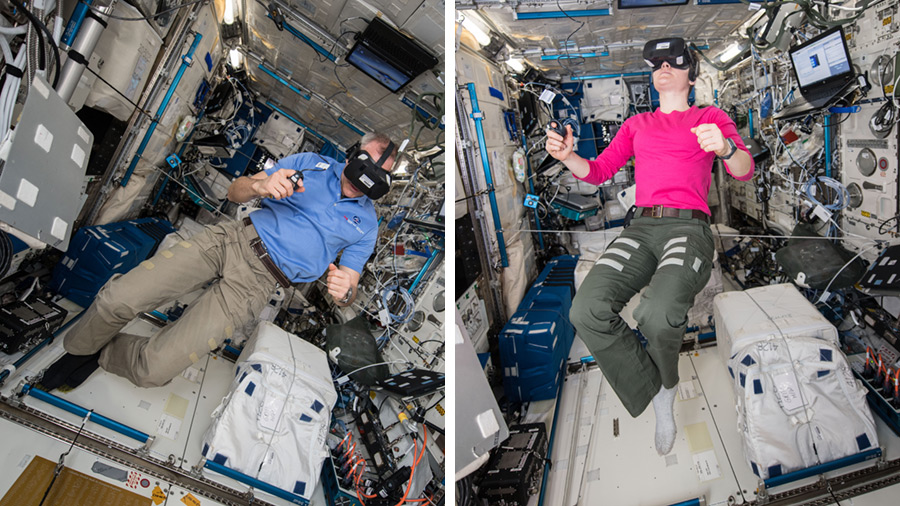Crew Studies How Space Affects the Mind and Heart

The Expedition 58 crew explored how living in space impacts perception and psychology today. The trio also studied satellite navigation and continued reviewing this weekend’s arrival of the first SpaceX Crew Dragon spacecraft.
Astronauts Anne McClain and David Saint-Jacques partnered up this morning inside Europe’s Columbus lab module for the Vection space perception experiment. The duo wore virtual reality goggles, earplugs and a neck brace to study microgravity’s effect on the vestibular system. They took turns performing a series of tasks documenting perception of motion, orientation, height and depth. Results may improve astronaut training and the design of future space habitats.
McClain then spent the rest of the day in the Japanese Kibo lab module operating a pair of tiny internal satellites for the SmoothNav study. The experiment is researching how autonomous satellites may benefit future public and private space exploration.
Saint-Jacques went in to the afternoon reviewing rendezvous and docking operations when the uncrewed SpaceX DM-1 spacecraft arrives Sunday at 6 a.m. EST. He wrapped up his workday helping psychologists understand the adverse effects of living in space on an astronaut’s cognition and behavior.
Commander Oleg Kononenko participated in a Russian cardiopulmonary study before installing communications gear in the Zvezda service module. In the afternoon, two-time station commander collected radiation readings and ensured the upkeep of Russian life support systems.
Mark Garcia





